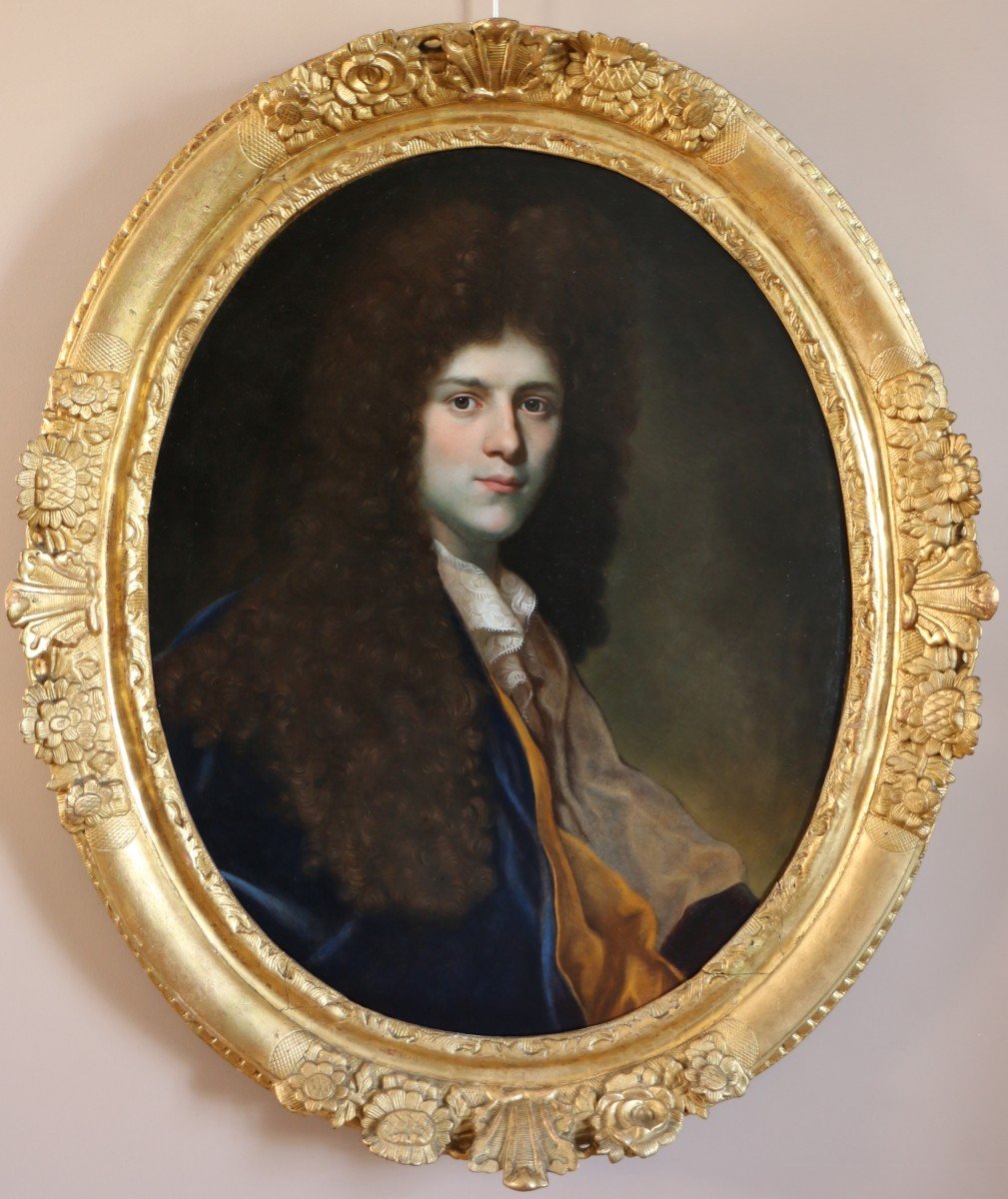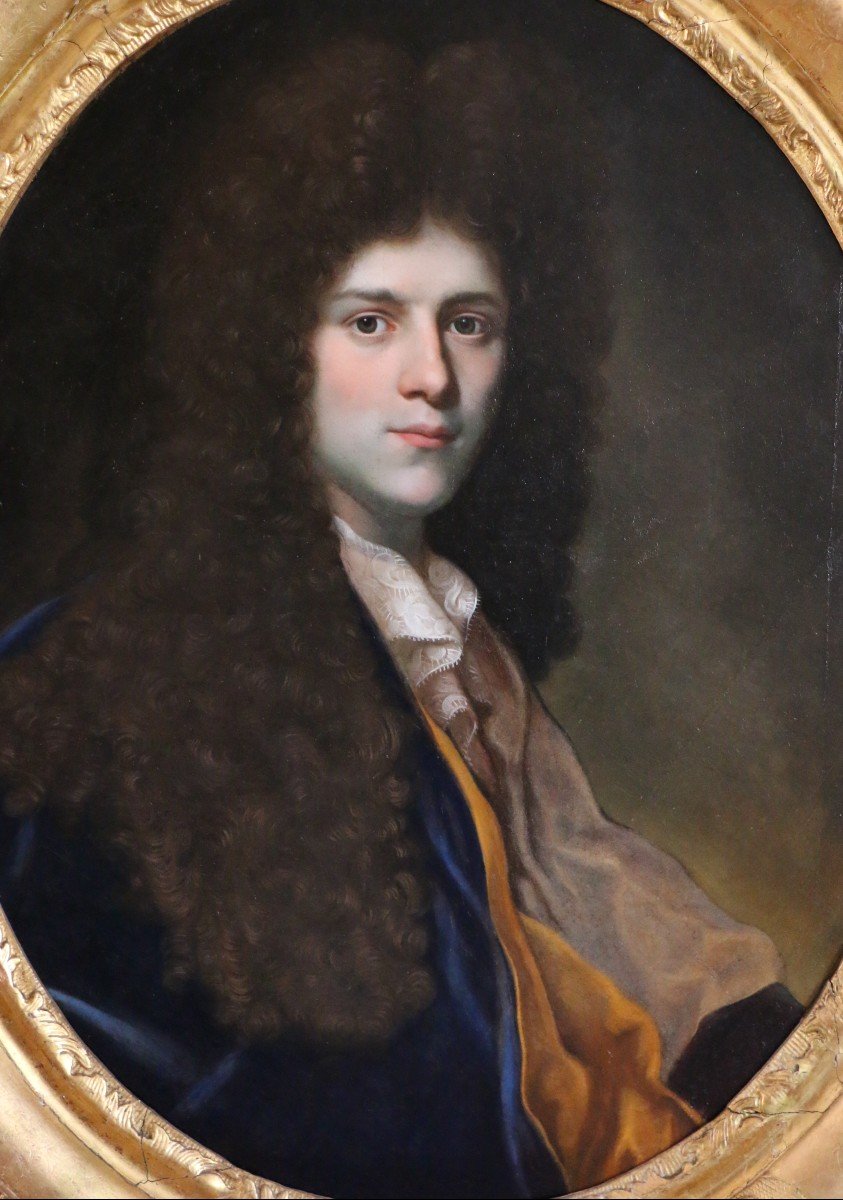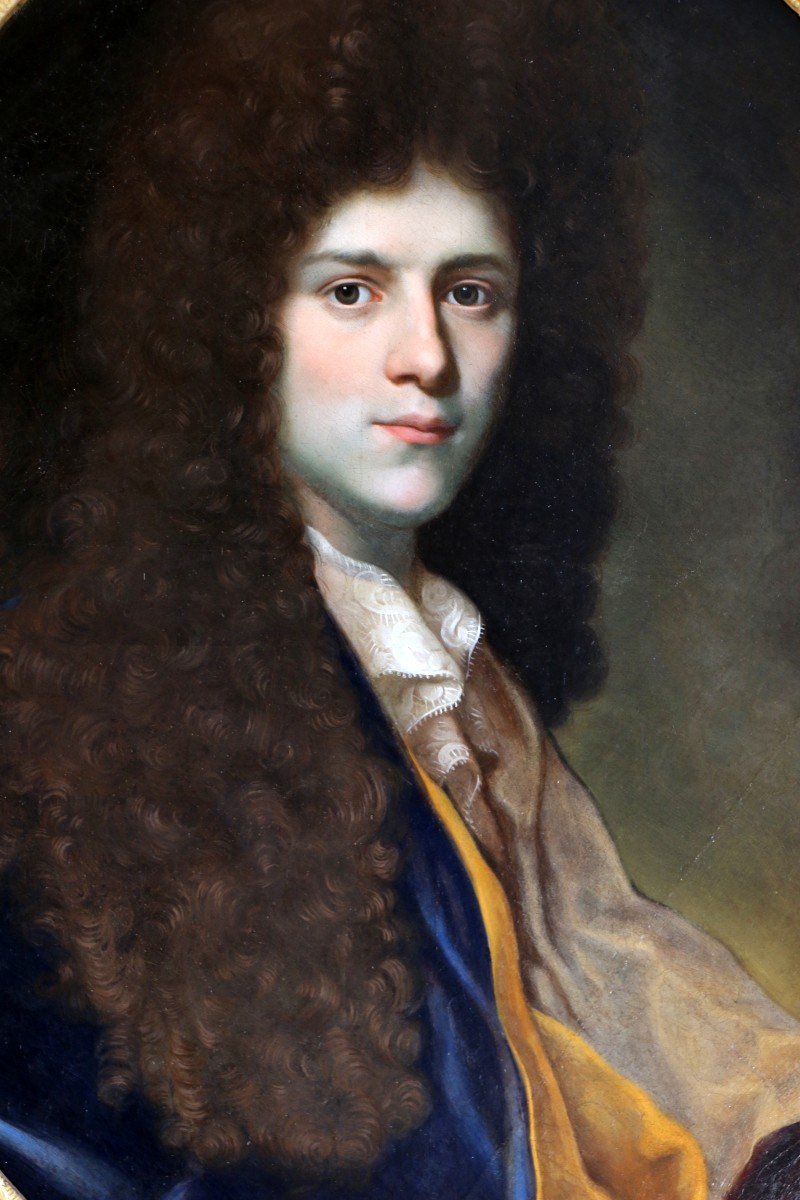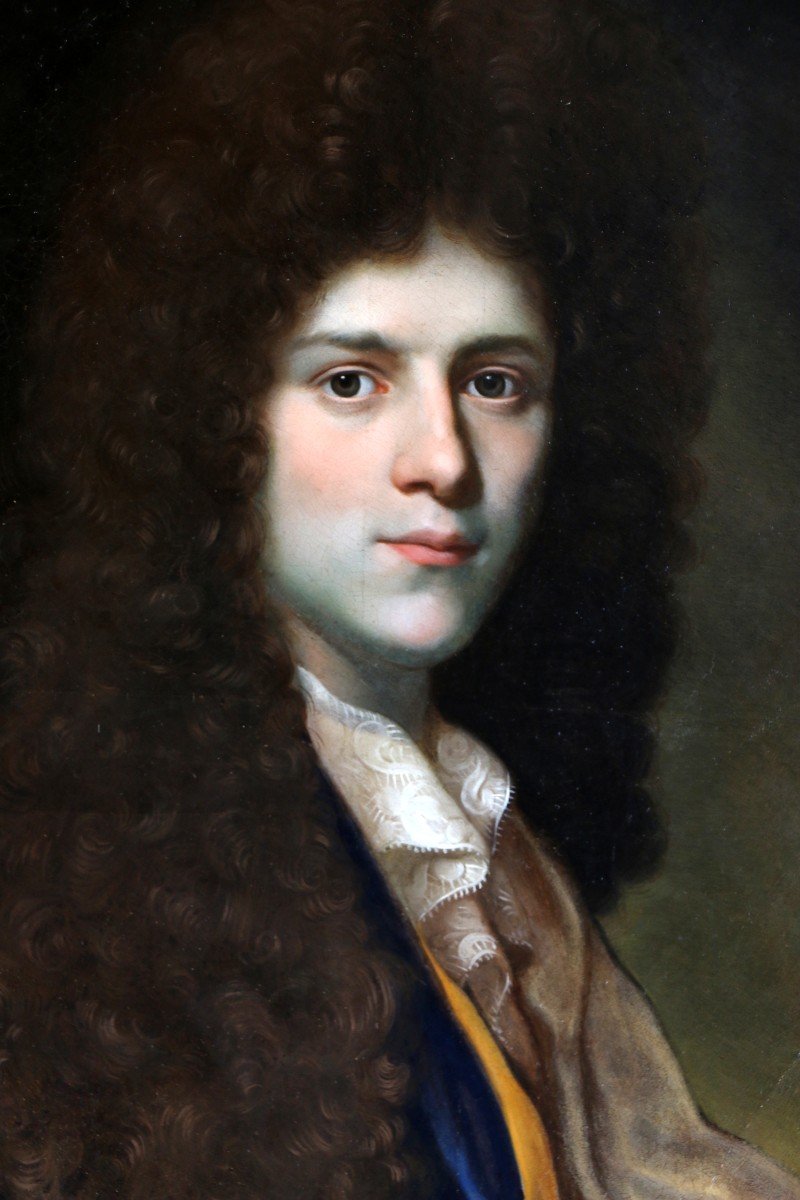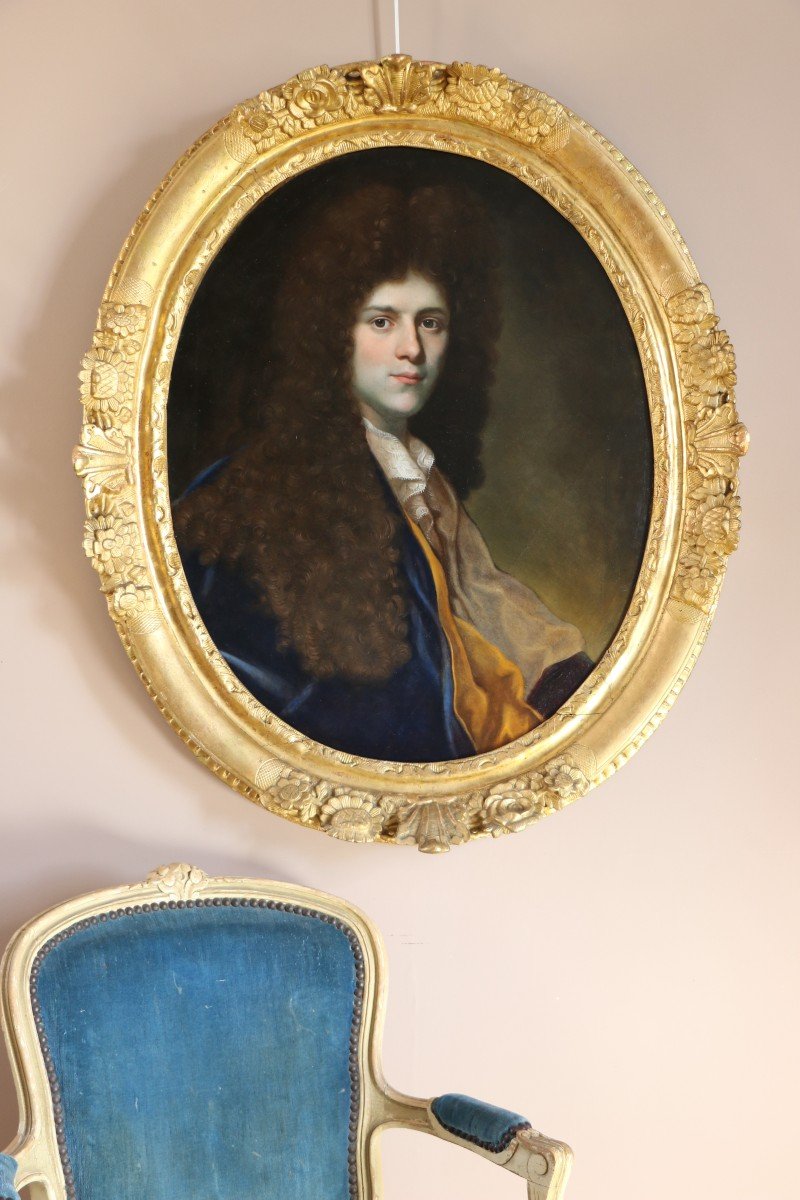"Jean Ranc (1674-1735) Attributed. Portrait Of A Young Gentleman Circa 1700"
Jean Ranc (1674-1735) attributed. Portrait of a young gentleman circa 1700Linen canvas 75 cm by 60 cm
Old frame 91 cm by 76 cm
This superb portrait of great elegance was probably made by Jean Ranc around 1700. He wears a dressing gown of blue silk silk lined with yellow silk.
Jean Ranc (1674-1735)
Ranc "the young" was the son of a painter of provincial fame, Antoine Ranc "the old" who officiated with great activity in Montpellier, city which had sheltered the talents of a certain Sébastien Bourdon and Françoise de Boyere… At that time, each painter fought to obtain the juicy municipal contracts to decorate public buildings. Antoine Ranc was one of them. A man of taste, he had built up a personal collection of paintings by European masters and had long received many young artists in his studio. Hyacinthe Rigaud was one of them, from 1671. The links between the latter and the Ranc family were long and fruitful. Jean quickly moved to Paris, from 1696. There he became the assiduous student of his Catalan compatriot and friend, and worked in his workshop. His art, moreover, still offers a certain mimicry with that of his elder brother. Approved at the Academy on December 30, 1700, he was received there on July 28, 1703 as a portrait painter with the portrait of Nicolas Van Plattenberg, known as "Platte-Montagne" (1631-1706) and that of François Verdier (1651-1730) ). Finally, on November 5, 1707, he achieved the envied title of painter of history thanks to a Carrying of the Cross unfortunately lost. Jean Ranc then established himself as a portrait painter of the Parisian bourgeoisie and produced a large number of paintings in the taste of Rigaud and that of Nattier. Cheaper than his untouchable friend, Ranc finds his audience until the Spanish event. On June 13, 1715, he married his goddaughter and niece of his teacher, Marguerite Elisabeth Rigaud, daughter of the painter Gaspard. The filiation between Ranc and Rigaud goes well beyond their family ties since, let us remember, Rigaud had been the pupil of Antoine Ranc Le père in Montpellier. Jean Ranc therefore naturally applied the precepts of his teacher and friend, but with more rigid attitudes. In 1710, Ranc painted a portrait of Joseph Delaselle, trader and shipowner from Nantes (Nantes, Musée des Beaux-arts) in which he used the same vocabulary made of drapes and a relaxed pose in a rural landscape. But even more, his portrait of Louis XV at the age of nine (Versailles, Musée national du château - see opposite), dressed in the royal habit in 1719, borders on the imitation of the portrait of Louis XV in coronation costume, five years old by Rigaud (same location). The mimicry is such that we find the regalia, the heavy drape animating the stage, the column, the ermine coat ... Concretely, Ranc's style is very close to that of Rigaud. However, his technique is very recognizable by the very slender hands he produces and above all by the more brittle folds of his drapes; those of Rigaud are more flexible and melted.







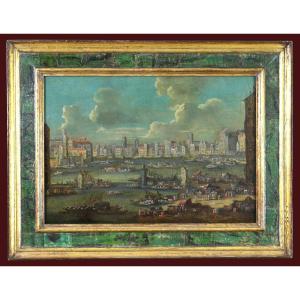

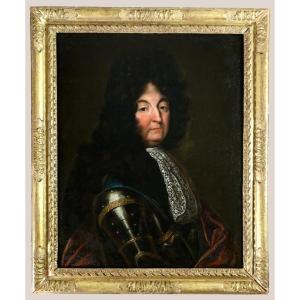
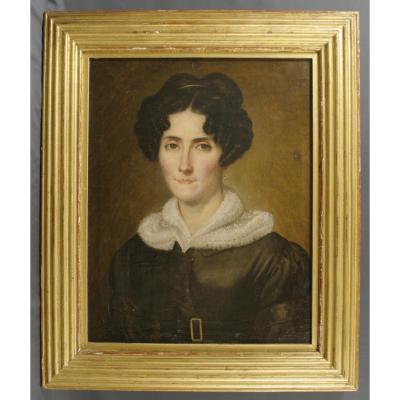
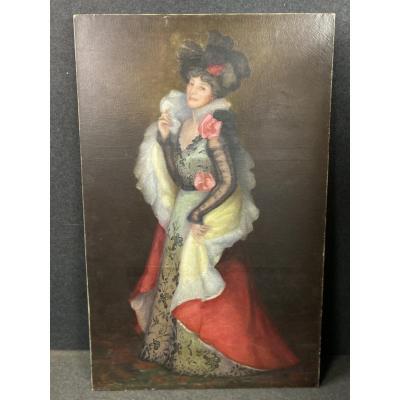


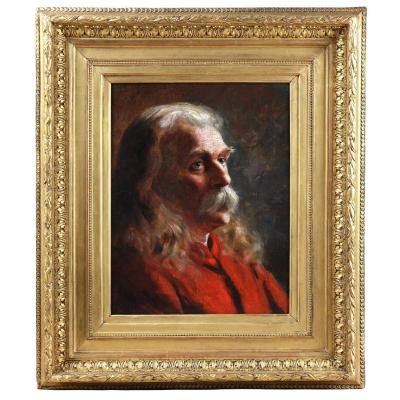
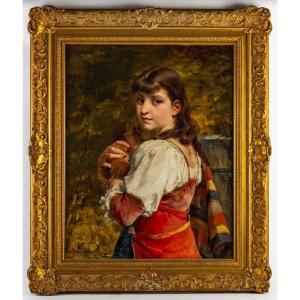




 Le Magazine
Le Magazine Rivista Artiquariato
Rivista Artiquariato TRÉSORS magazine
TRÉSORS magazine
